Welcoming us to the section entirely given over to mammals, the giraffe, dolphin, deer, sea lion, monkey, squirrel and bat share a stand in the middle of the room. Mammals are the only vertebrates that feed their offspring with milk secreted by the mammary gland of the female of the species. They are also the only animals whose bodies are furry or hairy. To the right, just as we enter the room, we note an installation where we can touch the samples of the various differing coats of mammal species. As you feel the coats, try to guess the species they belong to! Here, you can also touch the teeth that typify different mammals. We find here the typical teeth of predators, such as the fox, with pointed canines and sharp molars, and the teeth of herbivores, such as sheep, with flat molars, suitable for chewing vegetable matter. Rabbits feature prominent incisors, which never stop growing.
Our journey begins with featuring placentates, i.e. the mammals, whose young are born already in a fully formed state. In the first space, we see the insectivores with their strikingly pointed snouts. The hedgehog’s spines are hairs which have been modified for self-defence. Moles, living underground, have small eyes, and their paws are specially formed for digging. Chiropterans, better known as bats, are the only mammals which are capable of active flight, thanks to the modification of their forelimbs. The skeletal specimen of the Greater horseshoe bat illustrates changes in the bones of bats to permit this particular form of adaptation to the environment. Some cabinets display many primate species, subdivided into prosimians, Platyrrhini, Catarrhini, and apes. Apes are characterised by their having an opposable digit, as can be clearly seen in the orang-utan. Other special adaptations may be noted in a number of the exhibits including the giant ant-eater with its markedly elongated skull and toothless mouth, endowed, however, with a very long, sticky tongue – ideal for capturing its prey hidden inside ants’ and termites’ nests. The pangolin and the armadillo are protected from predators by their armour. When threatened, the porcupine pricks up the sharply pointed, modified hairs on its back. Blue hares use camouflage. In the winter, their fur turns white, to blend in with the snow. During the summer, the hare is an earthy colour. Marmots stand on their hind legs to spot predators from afar. They whistle to their companions at the first sign of danger. Two cabinets house a splendid, imposing carnivore species. The bear. There were once very many brown bears also in our mountainous zones. What with changes to the habitat – and more importantly hunting – brown bears disappeared by the early 20th century. However, a male from the Trentino region has recently been spotted in Val Brembana, Val Seriana and Val di Scalve. Wolves were also a common sight in the Pre-Alpine belt and on the plains of the province of Bergamo, where the game-filled woods provided an ideal environment for these hunters. Wolves are much feared, and were hunted down in our province and finally wiped out by about 1850. Evidence of the presence of wolves has now been found in Val Brembana, Val Seriana and Val di Scalve.
In the central group of cabinets, one is dedicated to the mustelids. Here, we find old specimens of the stoat with its summer and winter coats. These exhibits, donated to the museum by Professor Renato Perlini, a naturalist and founder of the original core section of this institute, date back to the early years of the 20th century. A cabinet houses an item of particular interest – the fossa, an endangered species peculiar to Madagascar. The following cabinets present the felines. With their sharp, curved, retractable claws, felines are the quintessential predator. The beautiful coats of many felines have always attracted hunters, and are, in themselves, a threat to their existence. Such felines are already greatly endangered by the shrinking of their natural habitats. Four cabinets feature hoofed animals. Some are local, such as the roe deer in its summer and winter coats, the chamois and the steinbock. On the rear stand we find a young Indian elephant, and a reconstructed skeleton providing a comprehensive record of the skeletal structure of this animal, and, notably, the structure of its skull and tusks. To the right is a game-station, where visitors can match animal profiles with the right geographic locations.
A cabinet features a number of monotremes and marsupials. The offspring of monotremes, including the Ornithorhynchus and Echidna, are still in the egg at the time of birth. Monotremes are unique to the continent of Australia. Marsupials give birth to their young just one week after fertilization. The pup, which is tiny at birth, then grows inside the mother’s abdominal pouch. Marsupials are to be found in Australia, New Guinea and the Americas.
The sea lion illustrates skeletal adaptations to aquatic habits. Of interest, too, is the reduced scale reproduction of the Steller’s Bering Sea cow, discovered by the Russian naturalist, Steller, in 1741. Steller’s sea cows were 6 to 9 metres long, and weighed more than 6 tons. They occupied the shallow waters of Bering Island in great numbers. This indiscriminately hunted species was soon wiped out, and was extinct within 27 years of its discovery. Steller was the only scientist ever to actually observe the sea cow. Concrete evidence of the species’ existence is limited to his account and to a few remaining skeletons.
Here, the visitor is faced with a massive African elephant’s skull. The huge cavity in the middle of its forehead looks like an eye. This peculiarity gave rise to the legend of the Cyclops – a gigantic, mythical, one-eyed man-like monster.
{rokbox album=|myalbum| title=|Zoologia :: Mammiferi|}images/stories/museo/ESPOSIZIONI/03_ZOOLOGIA/MAMMI/MAMMI_01/*{/rokbox}
{rokbox album=|myalbum| title=|5 Sensi al museo|}images/stories/museo/ESPOSIZIONI/07_SENSI/ZOOLOGIA/MAMMIFERI/*{/rokbox}


